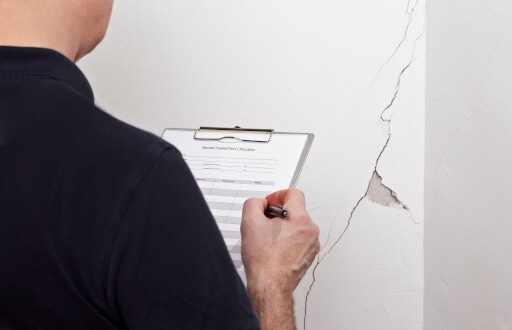
When it comes to rentals, there isn’t always enough room to go around. Though it’s important to accommodate tenants to the best of your ability, it’s important to stand firm with your rental’s occupancy limits. Otherwise, you run the risk of overcrowding, which can lead to a host of problems for both you and your tenants.
All that being said, there does come a point where occupancy limits can be a bit too limited, especially if they involve violating tenant rights and other housing mandates. So, though you can and should limit the number of tenants in a rental, it’s important to do so with certain limitations and considerations. Read on to discover when you can limit the number of tenants in a property and why it’s critical for your rental business.
In this article, we’ll explain how to reasonably limit the number of tenants in rental property by answering the following questions:
- What are occupancy limits?
- What factors influence occupancy limits?
- Why do landlords enforce tenant occupancy limits?
- Which laws determine occupancy limits?
- What are the best practices for landlords setting occupancy limits?
- What happens if a tenant violates the limited occupancy rule?
What Are Occupancy Limits?
Occupancy limits refer to the maximum number of tenants allowed to live in a rental property. These limitations are based on several factors, such as the size and type of rental unit, the number of bedrooms within the property, and, most importantly, local housing and safety codes.
Laws determining occupancy limits vary from state to state, with some regions having stringent mandates and others having next to none. For example, California law enforces a “two plus one” formula for its occupancy limits, meaning two people can occupy each bedroom, with one additional person in a living space. This means that up to five tenants could legally reside in a two-bedroom unit. Make sure to check your state laws and regulations to know your specific parameters for occupancy limits.
If your state doesn’t have specific mandates for limited occupancy, you can look to the U.S. Department of Housing and Urban Development (HUD) for guidance. HUD considers the general occupancy limit to be two people per bedroom. Though this standard is not law, HUD promotes this limit as a reasonable occupancy rule for most properties, assuming it’s compliant with state and local ordinances.
What Other Factors Help Determine Occupancy Limits?
Most properties align their limitations with HUD’s 2:1 standard. However, there are exceptions to this rule. Some landlords will loosen occupancy limits after evaluating the following factors:
- Size and square footage
- Number of bedrooms
- Property layout
- Property amenities such as shared facilities, limited parking spaces etc.
- The number of adults living on the property
- The number and age of children living on the property
- Other limiting factors, such as a property’s capacity for the septic, sewer, and other building systems
- Health and safety codes
- The possibility of new tenants requesting to add themselves to the established lease
Most courts defer to state and local ordinances in proceedings surrounding occupancy limits to determine which rules apply and which exceptions qualify. When choosing the occupancy limits for your rental, research and reference your local laws to ensure your legal compliance.
Why Do Landlords Enforce Limited Occupancy?
While imposing occupancy limits can sometimes feel unnecessary, it’s important for maintaining and protecting your rental business. Sure, an extra tenant or two doesn’t sound like the end of the world. But when severe overcrowding occurs, it can lead to significant problems such as:
Property maintenance concerns
Extra tenants mean extra wear and tear on your property. Though one other person doesn’t sound too destructive, you’d be surprised how quickly a property can deteriorate with just one additional occupant. Think of all the extra showers being taken, meals being cooked, and laundry loads being washed --- all of which will expedite your property’s gradual wear and tear. Not to mention, having more people means greater risks of accidents that could cause property damage. You know what they say about having too many cooks in the kitchen!
Safety and health regulations
As a landlord, it’s your job to provide a safe and habitable living space for tenants. However, this is nearly impossible if your rental is overcrowded. Too many tenants can increase the risk of fire hazards, damage to utilities, and inadequate water and electricity supply for a property. Additionally, excessive occupants lead to increased waste production, which could attract pests and cause unsanitary living conditions. So, unless you want your property to be overcrowded with critters, too, be stern with your tenant occupancy limits!
Insurance and liability issues
As we just mentioned, more tenants lead to more risks, which ultimately means more potential liability for you, the landlord. For every additional occupant, your chances of being liable for an accident, injury, or property damage increase. More tenants also means more potential lawsuits if one of these occurrences were to happen, putting you at risk of hefty legal costs and insurance claims.
How Are Tenant Occupancy Limits Regulated?
Earlier, we discussed how tenant occupancy limits are regulated by state mandates and recommendations from the HUD. However, there are other federal laws worth noting when it comes to limited occupancy, including:
- The 1988 Fair Housing Act (FHA): The Fair Housing Act prevents landlords from discriminating against tenants based on race, color, religion, sex, national origin, disability, and familial status. When it comes to occupancy limits, the FHA prohibits landlords from denying tenants based on family size. It mandates that families, including those with children, receive fair and non-discriminatory access to housing. Landlords cannot reject tenants or restrict their use of property amenities due to the presence of children.
- The 1991 Keating Memo: This document addresses the ambiguity surrounding occupancy limits after the 1988 FHA ruling. It aids regional courts in defining reasonable occupancy standards and preventing discrimination against families. According to the memo, landlords must consider unique factors, such as children's ages and unit square footage, when setting occupancy limits. It is illegal for landlords to cap the number of units they rent to families with children. The memo further asserts that policies limiting the number of children per unit are generally less reasonable than those limiting the total number of occupants.
- International Property Maintenance Code (IPMC): This code elaborates on occupancy standards in areas not covered by the FHA. It moves beyond the simplistic two-person-per-bedroom rule by basing occupancy standards on square footage. According to the IPMC:
- A single-person bedroom should be at least 70 square feet.
- Shared bedrooms must provide a minimum of 50 square feet per person.
- Kitchens and other non-habitable rooms cannot be used as bedrooms.
- One or two occupants need a minimum of 120 square feet of living room space.
- Three to five occupants require at least 120 square feet of living room space and 80 square feet of dining room space.
- Six or more occupants need a minimum of 150 square feet of living room space and 100 square feet of dining room space.
Best Practices for Landlords Setting Occupancy Limits
Now that we’ve covered limited occupancies, let’s go over some of the best practices for enforcing these occupancy policies. While establishing and communicating these limitations can be challenging, it’s much more manageable when you do the following:
Ensure FHA compliance
We mentioned the FHA earlier, but it’s important to reiterate its significance when setting occupancy limits. If you’re not careful, your limitations could be seen as discriminatory towards certain FHA-protected groups. For example, say a family of five applies for your two-bedroom rental, but you have a strict “two tenants per bedroom” policy. This could be seen as discrimination against families with children, who are protected under the FHA’s familial status category.
To avoid potential accusations of discrimination, include clear and reasonable justification for limited occupancy. We suggest doing the following when establishing your policy:
- Aligning your policies with the FHA, the Keating Memo, and the International Property Maintenance Code
- Only limiting your property’s occupancy based on the number of people living there versus the number of children living there
- Deciding when a child becomes an occupant (for example, after four years of age)
- Following local building or zoning codes
- Providing equal occupancy limits for all identical units
- Providing occupancy information to all tenants
Include an occupancy clause in your lease
When establishing occupancy limits, it’s important to document your policies and distribute them equally to all tenants. The best way to do this is by including an occupancy clause in your lease agreement. This clause should outline the expected number of occupants in the rental, as well as policies regarding adding new tenants to the lease and hosting long-term guests for extended periods. With a thorough occupancy clause, tenants will know what’s expected of them early on, minimizing miscommunication throughout the lease.
Conduct thorough tenant screenings
Thoroughly screening tenants will help you make informed decisions on occupancy limits. During this step of the application process, you can interview tenants about their intentions for your rental property, including how many people will be living there. If the tenant’s household size exceeds your occupancy limit, you can move on to another candidate as long as you comply with the FHA. This saves time for both parties and ensures that an applicant won’t waste time on a rental that doesn’t meet their occupancy needs.
During the screening process, here are some questions to ask prospective tenants that will help you determine their eligibility based on your occupancy limit:
- How many people will be living in the unit?
- How many parking spaces would you need?
- Are there any long-term guests or frequent visitors expected?
What Happens if a Tenant Violates the Occupancy Limit?
If a tenant violates your occupancy limit, it’s important to address the issue promptly and correctly. Refer to your occupancy clause to determine your course of action. For example, if this is your tenant’s first offense, you might issue them a warning with a specific timeline for correcting the issue. Or, if your tenant is a repeat offender, you could enforce a hefty fine or evict the tenant from your property. Whatever route you take, just make sure it’s outlined in your lease agreement and complies with all relevant laws.
Create Occupancy Standards for Your Rental with Apartments.com
Occupancy limits might seem daunting, but with the right tools and resources, they’re nothing but another step in the rental process. At Apartments.com, we’ll provide you with everything you need to set reasonable and compliant occupancy limits. From tenant screening services to customized lease templates and educational resources, we’ll guide you through the process of establishing occupancy standards for your rental, hassle-free!
Frequently Asked Questions
Can two people live in a one-bedroom apartment?
It depends on the state and local laws. However, many states have adopted HUD’s two-person-per-bedroom rule as standard for rental properties, in which case, yes, two people can live in a one-bedroom apartment.
Can I limit the number of children in a property?
No. Limiting the number of child tenants in a property violates the 1988 Fair Housing Act. To create fair occupancy limits for your property, limit the number of people versus the number of children allowed in your rental. Also, ensure your limits comply with federal, state, and local exceptions regarding children and their age.
Can I set my occupation policy to one tenant per bedroom?
Generally, courts consider an occupancy policy of one tenant per bedroom restrictive. Landlords may set reasonable occupancy limits that do not discriminate against families or children. Therefore, restrictive housing policies are unlawful.
Can I evict a tenant for violating the occupancy limit?
Yes, you can evict a tenant for violating the occupancy limit if it is clearly stated in the lease agreement and the tenant has exceeded the allowable number of occupants. However, it is important to provide proper notice and follow local eviction laws to ensure the process is legal and fair.
How do I determine a reasonable occupancy limit for my rental?
A reasonable occupancy limit is typically determined by local housing codes and safety regulations. It is also important to consider the size of the bedrooms and the overall square footage of the rental unit when setting these limits.
What should I do if a tenant requests to be exempt from the occupancy limit?
If a tenant requests an exemption from the occupancy limit, review the request carefully and consider any special circumstances or legal requirements, such as fair housing laws. You may have to consult a legal professional to ensure your decision is compliant with local regulations and does not infringe on tenant rights.
This article was originally published by Chanahra Fletcher on June 15, 2022.











